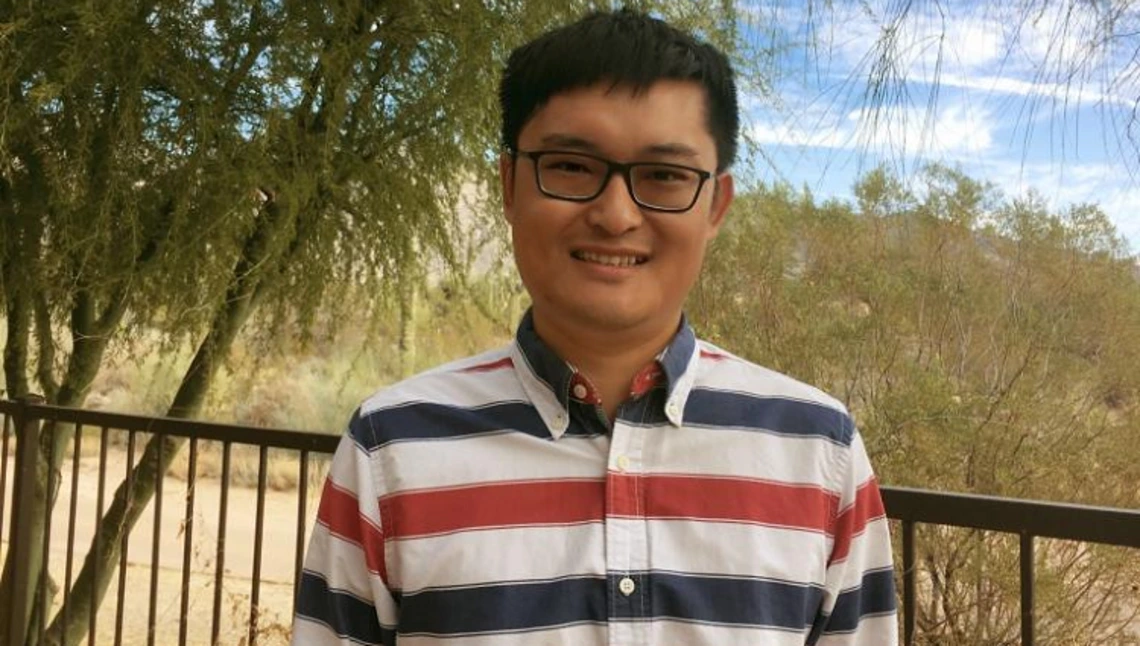Zhang Authors Paper On Quantum Entanglement

In a new paper published in Physical Review Letters, University of Arizona engineering and optical sciences researchers, in collaboration with engineers from General Dynamics Mission Systems, demonstrate how a combination of two techniques – radio frequency photonics sensing and quantum metrology – can give sensor networks a previously unheard-of level of precision. The work involves transferring information from electrons to photons, then using quantum entanglement to increase the photons’ sensing capabilities.
“This quantum sensing paradigm could create opportunities to improve GPS systems, astronomy laboratories and biomedical imaging capabilities,” said Zheshen Zhang, assistant professor of MSE and principal investigator of the university’s Quantum Information and Materials Group. “It could be used to improve the performance of any application that requires a network of sensors.”
Traditional antenna sensors transform information from RF signals to an electrical current made up of moving electrons. However, optical sensing, which uses photons, or units of light, to carry information, is much more efficient. Not only can photons hold more data than electrons, giving the signal larger bandwidth, but photonics-based sensing can transmit that signal much farther than electronics-based sensing, and with less interference.
Because optical signals offer so many advantages, the researchers used an electro-optical transducer to convert RF waves into the optical domain in a method called RF-photonics sensing.
“We designed a bridge between an optical system and a physical quantity in a completely different domain,” Zhang explained. “We demonstrated that with an RF domain in this experiment, but the idea could also be applied to other scenarios. For example, if you want to measure temperature using photons, you could use a thermo-optical transducer to convert the temperature into an optical property.”
Read more about this work at Photonics Media.
